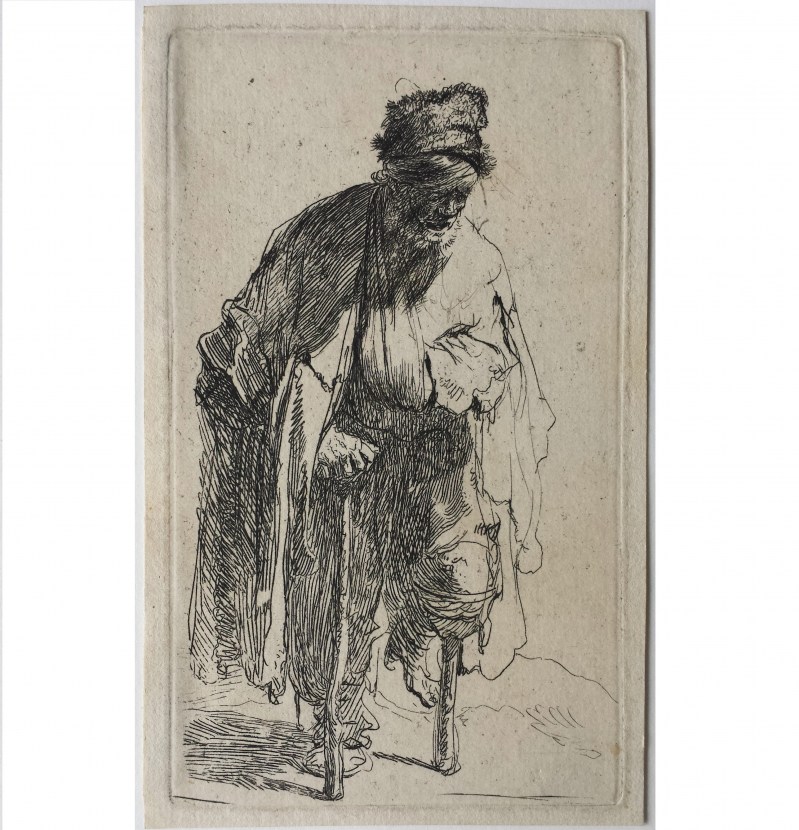REMBRANDT: Beggar with a Wooden Leg - c. 1630
SOLD
Etching, 112 x 66 mm. Bartsch 179; New Hollstein 49 II/IV.
Impression of the 2nd state (of 4), the plate reduced below by 2 mm, so that the stick of the beggar touches the platemark. Before the small plus (+) added in the lower right corner and the two dots in the upper right corner. Only the first and second states are entirely by Rembrandt.
Very fine impression printed on laid paper. The quality of this impression is similar to these of the 1st state.
Very good condition; a light tiny mark and a very light little stain on the platemark, in the lower right corner; 3 to 4 mm margin all around the platemark. Collector’s mark verso (Lugt 1020); half of an old ink number at upper edge verso.
Provenance: collection Friedrich Koch, engraver and dealer (1771-1832) in Mannheim. Boerner bought the main part of his collection in 1875 (Lugt 1020).
As noted by Erik Hinterding in Rembrandt etchings from the Frits Lugt Collection, the motif of beggars wasn’t a new one, when young Rembrandt begins to portray it in 1628. The series of twenty-four plates Les Gueux, etched by Jacques Callot and published a few years earlier, in 1622, in Nancy, is a source of inspiration for Rembrandt. The subject and composition of Beggar with a Wooden Leg bring to mind the 14th plate of Callot’s series, Mendiant à la jambe de bois [Beggar with a Wooden Leg] (Lieure 493), but the spirit and style are clearly different and reveal a change in the way Rembrandt depicts the beggars, freeing himself from the influence of Callot, as observed by E. Hinterding.
References: E. Hinterding : Rembrandt etchings from the Frits Lugt Collection, pp. 303-305 and 331-332; J. Lieure, Jacques Callot : catalogue raisonné de l'œuvre gravé, 1924-1929, no. 493.




